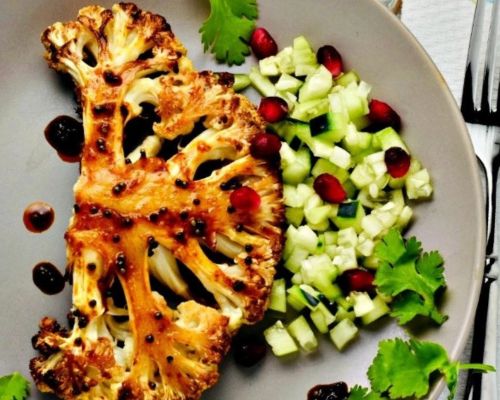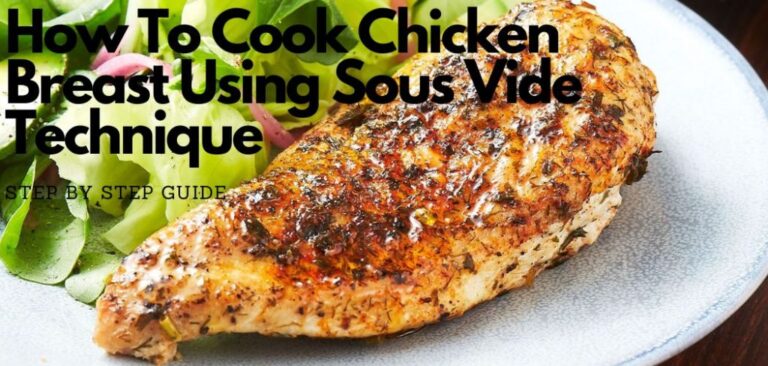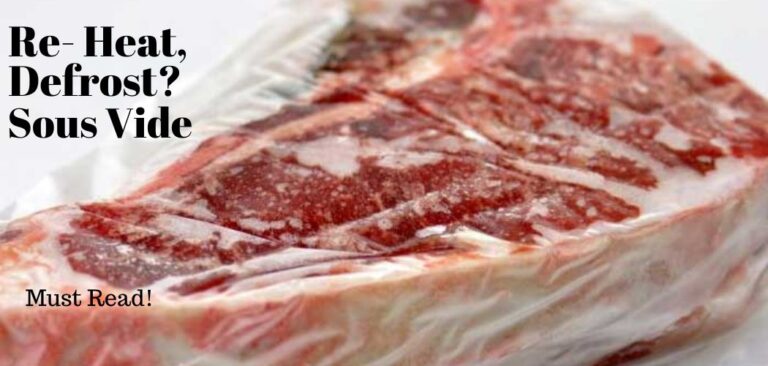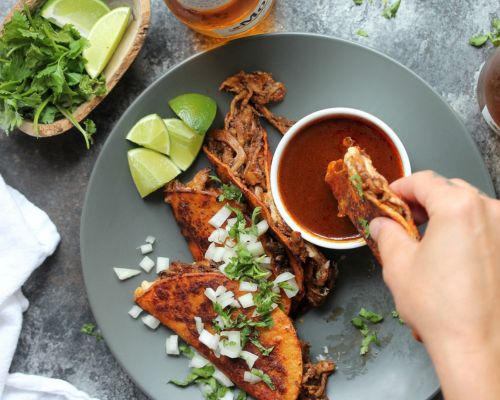We worked with sous vide chefs to develop cooking time and temperature instructions for common proteins using sous vide. Here are some examples of the guidelines that are currently at our disposal. In addition, you can find the recipes and tips for using the sous vide machine in an app that also comes with the equipment.
Cooking Time And Temperature For Various Proteins
Strip, Ribeye, and Porterhouse Steaks
It is recommended that highly marbled cuts, such as a grain-finished Prime-grade ribeye and strip, be cooked to a temperature a few degrees higher than leaner steaks, such as tenderloin. This is because they have a high proportion of intramuscular fat, which prevents them from drying out and imparts a robust flavor. Steaks with a higher fat content also have a higher natural insulation level; as a result, it will take these steaks a little bit longer to achieve the appropriate internal temperature.
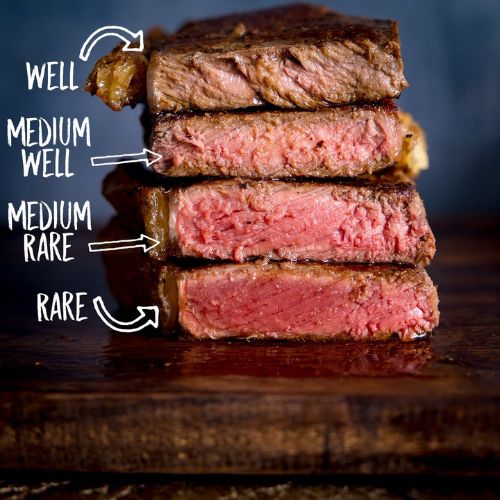
| Very Rare to Rare | 120°F (49°C) to 128°F (53°C), 1 to 2 1/2 hours. |
| Medium-rare | 129°F (54°C) to 134°F (57°C), 1 to 4 hours (2 1/2 hours for temperatures under 130°F/57°C). |
| Medium | (57°C) to 144°F (62°C), 1 to 4 hours. |
| Medium-well | 145°F (63°C) to 155°F (68°C), 1 to 3 1/2 hours. |
| Well done | 156°F (69°C) and up, 1 to 3 hours. |
Tenderloin Steaks
It is simple to overcook lean tenderloin; if no fat is contained inside the muscle, it will become dry and tough. Compared to ribeye or strip steaks, which include more fat, tenderloin steaks are cooked to a few degrees lower temperature. We want our tenderloins cooked to a temperature between extremely rare and rare, which is the range between 120 degrees Fahrenheit (49 degrees Celsius) and 128 degrees Fahrenheit (53 degrees Celsius) so that they are supple and juicy.
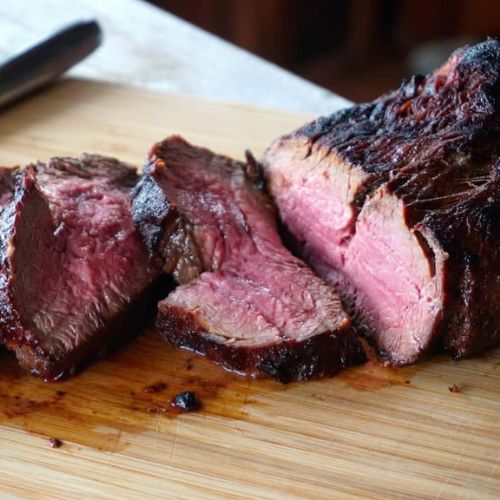
| Very Rare to Rare | 120°F (49°C) to 128°F (53°C), 45 minutes to 2 1/2 hours |
| Medium-rare | 129°F (54°C) to 134°F (57°C), 45 minutes to 4 hours (2 1/2 hours for temperatures under 130°F/57°C) |
| Medium | ( 135°F (57°C) to 144°F (62°C), 45 minutes to 4 hours |
| Medium-well | 145°F (63°C) to 155°F (68°C), 45 minutes to 3 1/2 hours |
| Well done | 156°F (69°C) and up, 1 to 3 hours |
Hamburgers
When hamburgers are prepared traditionally, it might be challenging to determine when they are done cooking. If the meal has a low density, it will cook much too rapidly, and if it has a thin profile, it will be challenging to decide where to place a thermometer. You can always ensure the inside is the perfect shade of pink as long as the cooking process is done carefully.
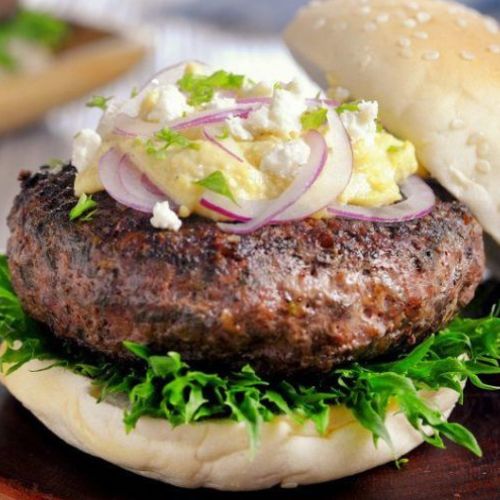
| Very Rare to Rare | 115°F (46°C) to 123°F (51°C), 40 minutes to 2 1/2 hours |
| Medium-rare | 124°F (51°C) to 129°F (54°C), 40 minutes to 2 1/2 hours |
| Medium | 130°F (54°C) to 137°F (58°C), 40 minutes to 4 hours (2 1/2 hours for temperatures under 130°F/57°C) |
| Medium-well | 138°F (59°C) to 144°F (62°C), 40 minutes to 4 hours |
| Well done | 145°F (63°C) to 155°F (68°C), 40 minutes to 3 1/2 hours |
Chicken Breasts
When cooked in sous vide machine, chicken breasts never become dry and rough; they are consistently moist and tender. A wide variety of temperatures and periods are indicated for cooking, and this range depends on the final texture you want to achieve and the temperature at which you want to serve it. When served hot, we prefer the temperature of the chicken to be between 140 and 145 degrees Fahrenheit. When the chicken has been cooked to an internal temperature of 140 degrees Fahrenheit (60 degrees Celsius), it is extremely soft, extremely juicy, smooth, entirely opaque, completely firm, and exhibits no evidence of being stringy. The chicken will still be moist and tender even after the temperature has been raised to 150 degrees Fahrenheit (66 degrees Celsius). Still, it will have some of the stringiness that chicken is notorious for. This is the optimal temperature for chicken that will be added to a salad and then served at room temperature. It is finished when the temperature hits approximately 160 degrees Fahrenheit (71 degrees Celsius). This temperature range may be ideal for you if you prefer conventional roasted chicken but have always wished it had more juice when you eat it.
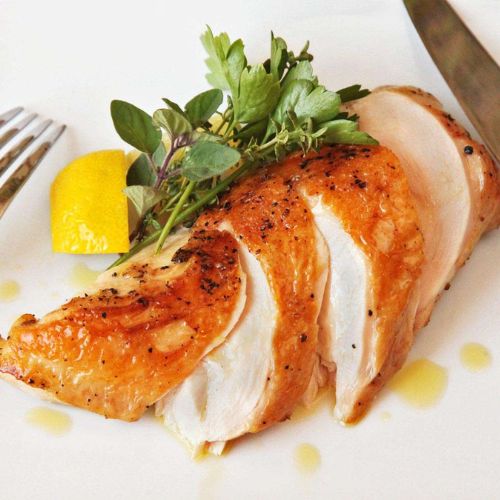
| Tender and juicy for cold chicken salad | 150°F (66°C), 1 to 4 hours |
| Very soft and juicy, served hot | 140°F (60°C), 1 1/2 to 4 hours |
| Juicy, tender, and slightly stringy, served hot | 150°F (66°C), 1 to 4 hours |
| Traditional, juicy, firm, and slightly stringy, served hot | 160°F (71°C), 1 to 4 hours |
Chicken Thighs
Chicken thighs and drumsticks, as opposed to chicken breasts, contain a more significant amount of connective tissue, a more robust flavor, and a texture that is able to withstand a little bit more cooking time. If they are cooked at temperatures lower than 150 degrees Fahrenheit (66 degrees Celsius), they become highly chewy and practically impossible to swallow. At 150 degrees Fahrenheit (66 degrees Celsius), the juices begin to run clear, but the more rigid connective tissue, such as big tendons, will still have a bit of a chewy texture. If you enjoy a particularly robust and meaty flavor, this range is a wonderful option for you. When the temperature approaches 165 degrees Fahrenheit (74 degrees Celsius), timing becomes an important consideration. When chicken is cooked for a shorter amount of time, it comes out more tender but also a little bit drier than when it is cooked to an internal temperature of 150 degrees Fahrenheit. When chicken is cooked for a more extended period of time, it becomes considerably more prone to falling apart. Chicken liquids and connective tissues that have been broken down begin to congeal in the bag, eventually resulting in the formation of a gel that can be used later to make a flavorful pan sauce.
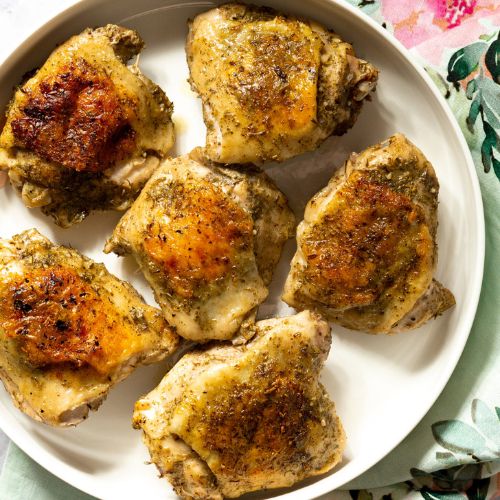
| Firm, very juicy, slightly tough | 150°F (66°C), 1 to 4 hours |
| Tender and very juicy | 165°F (74°C), 1 to 4 hours |
| Fall-off-the-bone tender | 165°F (74°C), 4 to 8 hours |
Pork Ribs
Ribs are traditionally prepared by smoking them for an extended period of time, which allows the abundant connective tissue to break down into gelatin and tenderize the typically chewy meat. The rate at which this occurs is determined both by the temperature and the amount of time that has passed. The lower the temperature, the longer it takes. The lower the temperature at which the ribs are cooked, the more moisture will be retained on the interior of the meat as it cooks. Ribs cooked at 145 degrees Fahrenheit (63 degrees Celsius) will require approximately three times as much time to tenderize as ribs cooked at 165 degrees Fahrenheit (74 degrees Celsius), but they will have a more luscious, meaty texture and nearly taste like an extra-tender steak. Ribs grilled at a higher temperature will have a more classic barbecue texture, with well-rendered fat and meat that comes apart as you eat it.
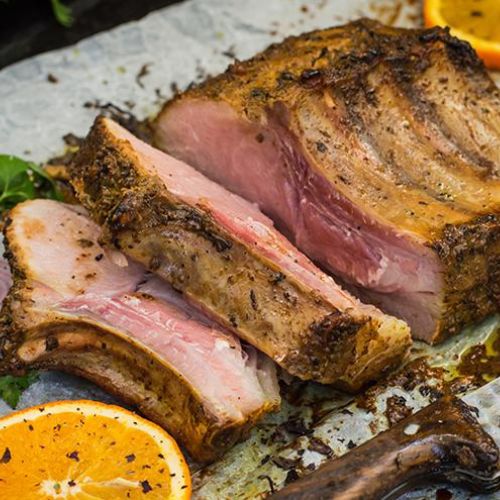
| Extra meaty, succulent, and tender | 145°F (62.8°C), 36 hours |
| Traditional BBQ, tender with a little resistance | 165°F (73.9°C), 12 hours |
Salmon
Salmon is typically cooked between 104 and 140 degrees Fahrenheit (40 and 60 degrees Celsius), which results in textures ranging from barely warm to firm and even chewy at the higher end of the temperature spectrum. It is only necessary to cook the fish for 25 to 45 minutes, which is plenty of time to bring the temperature up to its target all the way through. In addition to making the fish more flavorful and firm, soaking it in brine before cooking helps make it more delicious.
Salmon is one of the fish that I enjoy preparing with a water bath the most. When it is used in meals that are either mildly warmed or have a consistency similar to sashimi, I appreciate it the most. In addition, heating it at higher degrees gives it a nice flaky texture while maintaining a good amount of moisture.
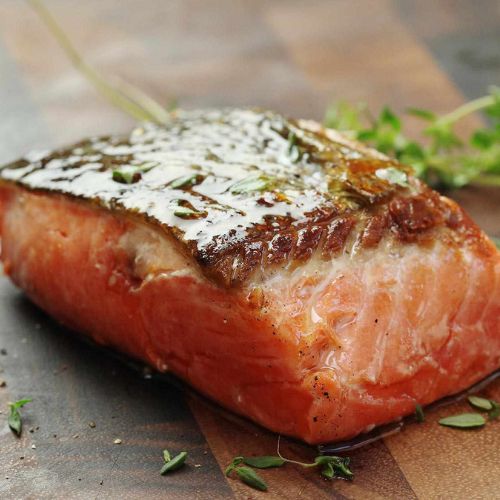
Salmon is typically cooked at temperatures ranging from 104 degrees Fahrenheit to 140 degrees Fahrenheit (40 degrees Celsius to 60 degrees Celsius), which results in textures ranging from barely warm to firm and even chewy. Fish just needs to be cooked for the minimum amount of time necessary to reach an internal temperature of 165 degrees. In addition to making the fish more flavorful and firm, soaking it in brine before cooking helps make it more delicious. This can be a 5% brine that is either wet or dry, depending on your preference.
| Slightly Warmed | 104°F (40°C), 25-45 min |
| Firm Sashimi | 110°F (43.3°C), 25-45 min |
| Lightly Flaky and/or Firm | 120°F (48.9°C), 25-45 min |
| Very Flaky and/or Firm | 132°F (55.5°C), 25-45 min |
| Chewy | 140°F (60°C), 25-45 min |

